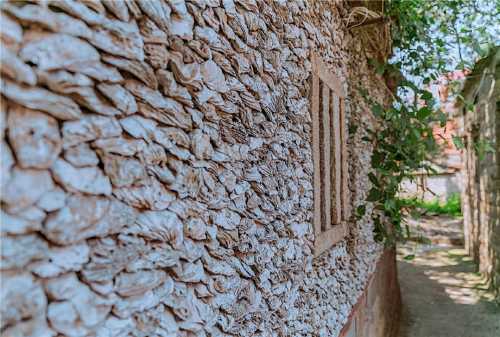Popular Trip Moments
Quanzhou Homestay: Only $60 per person for a stay in a private villa with a pool! | Quanzhou Qixu|Stay in a fairy-tale hotel between the reefs and the sea, perfect for photos!! | 【The ultimate budget autumn travel: 8 places with an average cost of 400+ per person, so beautiful it feels like stealing autumn 🍂 | Quanzhou is more than just West Street! Hidden in Wulin is a nostalgic dream of the South Seas. | Taining Dajin Lake Pitfall Avoidance Guide|Tested Boat Tour + Island Landing Complete Strategy | IN Quanzhou | Stay in a super chill wabi-sabi style hotel | Lingyuan Mountain Scenic Area: A Perfect Place to Relax | Quanzhou's lesser-known destinations: Streets within alleys, alleys within streets – step into a vibrant maritime merchant community | Quanzhou Magic🌟 | Quangang Shanyao Salt Field: A Hidden Gem in Quanzhou Known as the "Mirror of the Sky" | Quanzhou Photo Guide: 8 Must-Visit Magical Spots for National Day! | In Quanzhou! A super five-star experience in a third-tier city! | Just across the bridge! Enjoy a day trip to Little Kinmen! | Quanzhou Wulin Ancient Village is absolutely amazing, a seriously underrated treasure | Discover a hidden paradise! A 2-day, 1-night healing trip to Meizhou Island | Exploring the Ancient City of Quanzhou: The Charm of Alleys Beyond West Street | Fujian people really keep their words—so far, the most beloved seaside amusement park has appeared | When visiting Quanzhou, don’t just go to Quanzhou West Street—this seaside park is stunning | Yonghe Temple | Kinmen Zhushan Settlement | Putian | Luojia Temple rainy beauty and cultural exploration 🌧️ | Jingshan Park | Jingshan Park | Jingshan Park | Quanzhou Shuangta Jingtiantai B&B✨2208 Inn (Quanzhou West Street Wenkui Branch) | Jhaishan Tunnel in Kinmen | Enjoy the serene beauty of Shuangfen Reservoir in Nan'an
Recommended Attractions at Popular Destinations
Popular Attractions in Singapore | Popular Attractions in Bali | Popular Attractions in Los Angeles | Popular Attractions in Las Vegas | Popular Attractions in Phuket | Popular Attractions in Chefchaouene | Popular Attractions in London | Popular Attractions in Kuala Lumpur | Popular Attractions in Dubai | Popular Attractions in Sydney | Popular Attractions in Iguazu National Park(Argentina) | Popular Attractions in Paris | Popular Attractions in Melbourne | Popular Attractions in West Lake | Popular Attractions in Shanghai | Popular Attractions in Beijing | Popular Attractions in Osaka | Popular Attractions in New York | Popular Attractions in Tokyo | Popular Attractions in Kyoto | Popular Attractions in Walt Disney World Resort | Popular Attractions in Bangkok | Popular Attractions in Barcelona | Popular Attractions in Zanzibar Island | Popular Attractions in Rome | Popular Attractions in Madrid | Popular Attractions in Chengdu | Popular Attractions in Florence | Popular Attractions in Jungfrau Region | Popular Attractions in Istanbul
Popular Attractions
The Shi Kefa Museum | Dalianwan Fort | Yangzhou Shuangbo Museum | Yechun Garden | Hengshan Mountain College | Zhanqiao Park | Little Qingdao | Lu Xun Park | A Bamboo-Lined Path Yunqi | Quyuanfenghe (Breeze-Rustled Lotus In Quyuan Garden) | Huashilou House | Lata Stone Fortress | National Park of Hainan Tropical Rainforest | Christ Church Melaka | Church of St. Francis Xavier Melaka (1845) | Hans-Donnenberg-Park | City Park | Masjid Al-Mubarok | Perbatasan kecamatan Herlang,Kecamatan Ujung loe | Sports Center 'Due Pini' | Campo De Futbol | Esp. Lamartine | Being bana | Chandramoulishwara Navagrahala Temple | Municipal Library John Gaudino de Oliveira | Qixia Temple | The Bund | Shanghai Botanical Garden | Shanghai Gongqing Forest Park | Jin Mao Tower
Popular Restaurants in Quanzhou
PEAR ROOF | You Li Coffee Shop | BING ZHENG TANG | 东兴牛肉店(庄府巷店) | 好成财牛排馆(涂门街店) | 爱啊石花膏 | Hou.Grandma Rouzong Shop | Dong jie zhong lou Rou zong | Sidan Jiangmuya | Chaofuchengda Restaurant (baoshanhuayuan) | 吴氏手工麻糍 | HAI SI JIN FENG | YUAN BAO TAIWAN SNACK BAR | 康庄满煎糕店 | Linjia Minnancai Baozhou Road Branch | 锦坡老牌姜母鸭(美食街店) | Gu Xiang Chinese Restaurant | LAN SHI ZHONG LOU | Auntie Jijia | 悦宴·福建菜精品料理 | Hall Thing (Licheng) | Taifu Restaurant | A qiu steak (Huxin Street Branch) | 水门国仔老店(水门巷店) | ZAYTON COURTYARD | 泉州东海悦华酒店·闽筵1984 | Donglaicaitousuan | 宋小谨·泉州菜(南益广场店) | HILLSBOROUGH FANKAY HOUSE·MIN MAN REN JIA | Jituiyou
Popular Ranked Lists
Top 50 Must-Visit Restaurants in Bali | Top 10 Local Restaurants in Lushan Global Geopark | Popular Premium Hotels in Vallromanes | Popular Premium Hotels in Chattanooga | Top 10 Trending Attractions in Kunming | Popular Premium Hotels in Kemerovo Oblast | Popular Premium Hotels in Thu Dau Mot | Popular Trending Attractions in Zibo | Popular Premium Hotels in Turkistan Region | Popular Trending Attractions in Ergun | Top 50 Must-Visit Restaurants in Bangkok | Top 50 Must-Visit Restaurants in Sydney | Popular Trending Attractions in London | Top 50 Must-Visit Restaurants in Athens | Top 50 Must-Visit Restaurants in Koh Samui | Top 50 Luxury Hotels near Choshi | Popular Trending Attractions in Hohhot | Top 10 Trending Attractions in Hong Kong | Top 50 Must-Visit Restaurants in Hong Kong | Popular Premium Hotels in York | Popular Trending Attractions in Sapporo | Popular Premium Hotels in Kemerovo | Popular Premium Hotels in Mlini | Popular Trending Attractions in Singapore | Top 10 Trending Attractions in Wuxi | Popular Trending Attractions in Zhuhai | Top 10 Trending Attractions in Guangzhou | Top 50 Luxury Hotels near Muak Lek | Top 50 Luxury Hotels near Innsbruck | Top 10 Trending Attractions in Nanjing
About
Payment methods
Our partners
Copyright © 2025 Trip.com Travel Singapore Pte. Ltd. All rights reserved
Site Operator: Trip.com Travel Singapore Pte. Ltd.
Site Operator: Trip.com Travel Singapore Pte. Ltd.



























